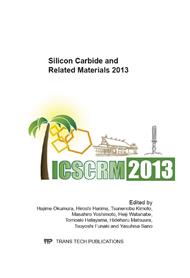p.1150
p.1154
p.1158
p.1162
p.1166
p.1170
p.1174
p.1180
p.1185
Backside Monitoring of Graphene on Silicon Carbide by Raman Spectroscopy
Abstract:
Raman spectroscopy is commonly applied for studying the properties of epitaxial graphene on silicon carbide (SiC). In principle, the Raman intensity of a single graphene layer is rather low compared to the signal of SiC. In this work we follow an approach to improve the Raman intensity of epitaxial graphene on SiC by recording Raman spectra in a top-down geometry, i.e. a geometry in which the graphene layer is probed with the excitation through the SiC substrate [1]. This technique takes advantage of the fact, that most of the Raman scattered light of the graphene is emitted into the SiC substrate. We analyze in detail the top-down measurement geometry regarding the graphene and SiC Raman intensity, as well as the influence of aberration effects caused by the refraction at the air/SiC interface.
Info:
Periodical:
Pages:
1166-1169
Citation:
Online since:
February 2014
Authors:
Keywords:
Price:
Сopyright:
© 2014 Trans Tech Publications Ltd. All Rights Reserved
Share:
Citation:



